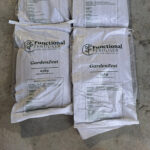By Peter Burton
The saying in the investment world, “you’re either a contrarian or a victim” could equally apply to the farming community.
No-one I’ve spoken to applauds the introduction of the recently announced fresh-water standards, soon to become a legal requirement, and yet no-one has been surprised.
As the ramifications of the required reduction in nitrate, phosphorus, and sediment loss become apparent, over 95% of the farming community will be figuring out how they might in time comply.
And yet there is a small group of farmers that will not be required to make any changes to their current farming practises. They’ve anticipated the changes from as far back as 2002 and steadily made the changes necessary to be compliant.
The key difference is their non-reliance on fertiliser nitrogen as the driver of pasture growth. Fertiliser nitrogen may be used as a development tool to good effect, however its regular use on grazed permanent pasture is counterproductive.
Data from the late 1970’s shows that pasture production from well-managed high fertility sites has steadily declined, however not on farms where nitrogen fixed by clover is the driver of growth.
These farms regularly grow in excess of 18 tonne of drymatter/ha. Quality is also enhanced resulting in less kilograms required to produce a kilo of milk, meat or wool.
The spread of feed over the year is more even with stronger growth over the summer and early autumn period.
Based on a study in the 2011/12 season there is also a 70% reduction in the concentration of Nitrate N lost to groundwater compared to a neighbouring property, with subsequent measures supporting the difference between the two systems.
Given the magnitude of the differences an independent study was commissioned to measure differences in farm performance, and the Summary contained the following.
Based on the last 2011/12 season it appears the Biological farm had an advantage over the Conventional farm in all areas analysed. The Biological farm had a lower stocking rate and grew more pasture per hectare therefore had a reduced reliance on grazing off and applying nitrogen. Financially it had a $500 per hectare advantage… It also had a significantly smaller environmental footprint in terms of nitrogen leached from the farm and nitrate concentration in the groundwater…This Biological farm is a good example of what is possible for many Conventional farms that have a desire to improve profitability as well as reduce environmental footprint.
The data has been widely circulated amongst farming organisations, political groups and councils. There is always initial interest, however when the ramifications to the wider rural community become obvious the ability to discuss further stops.
It’s not an unusual phenomenon. Fundamental change benefiting the wider community, nearly always causes short term social upheaval resulting in organised resistance becoming increasingly resolute before inevitable acceptance.
There are two reasons why the farming community should prioritise discussion with those in a position to facilitate change.
Firstly, regulation will become more draconian as times goes on and it becomes apparent that there is no silver bullet solution coming from Research Institutes.
Although farmers have a right, some would argue an obligation, to push back and claim the standards under the timeframe are not achievable, there is already enough data from a large enough group of farmers that demonstrates the opposite.
The second and more compelling reason is that the problems with increased nitrates and leaching of phosphorus is due to steadily declining soil carbon levels, and with less soil carbon nitrogen and phosphorus losses escalate and farm production declines.
For more information call Peter Burton 0800 843 809




